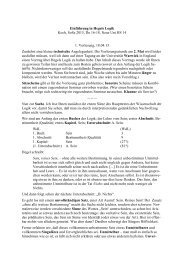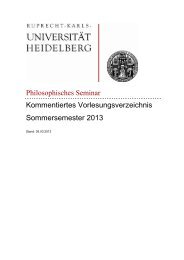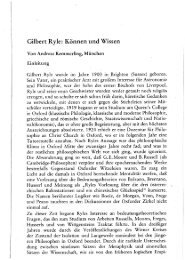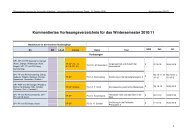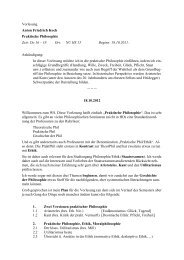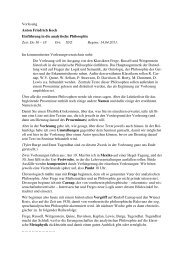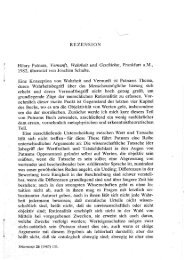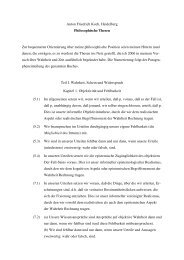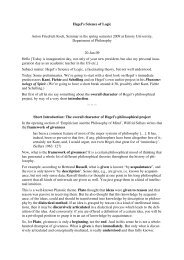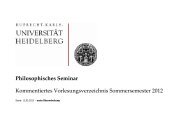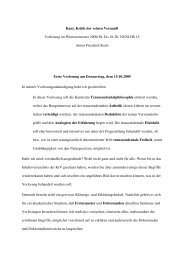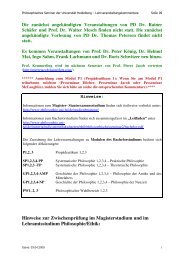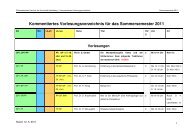KANT'S CRITIQUE OF TELEOLOGY IN BIOLOGICAL EXPLANATION
KANT'S CRITIQUE OF TELEOLOGY IN BIOLOGICAL EXPLANATION
KANT'S CRITIQUE OF TELEOLOGY IN BIOLOGICAL EXPLANATION
You also want an ePaper? Increase the reach of your titles
YUMPU automatically turns print PDFs into web optimized ePapers that Google loves.
130 Antinomy of Judgment<br />
§74 The reason why it is impossible to treat the concept of a technic<br />
of nature dogmatically is that a natural purpose is inexplicable.<br />
§75 The concept of an objective purposiveness of nature is a critical<br />
principle of reason for our reflective judgment.<br />
§76 Comment [Anmerkung].<br />
§77 On the peculiarity of the human understanding that makes the<br />
concept of natural purpose possible for us.<br />
§78 How the principle of the universal mechanism of matter and the<br />
teleological principle can be reconciled in the technic of nature.<br />
Let it also be noted that, disregarding the "Comment" (§76), the antinomy<br />
of judgment has exactly the same number of sections as the<br />
antinomies chapter in the Critique of Pure Reason and a similar<br />
structure as well, although the parallels of content are rather loose.<br />
On the basis of the analysis of the antinomy as a figure of<br />
argument carried out in the last chapter, we should expect the theories<br />
of the organism actually propounded in the 18th century to be<br />
taken into consideration in some manner by the thesis and antithesis<br />
of the antinomy of judgment. We cannot of course expect to find a<br />
repeat of the Leibniz-Clarke debate, since the two did not in fact<br />
quarrel about the concept of the organism; but even the more general<br />
expectation, that both sides of the contradiction represent positions<br />
actually taken by significant scientists, cannot be satisfied<br />
without reservations. We can be fairly certain that Kant's predecessors<br />
did not consider their theories of organic phenomena to be<br />
merely regulative principles in the sense of the Critique of Pure<br />
Reason and that they were closer to what Kant called "constitutive<br />
principles." The concept of natural purpose was introduced by Kant<br />
himself, and he must take full responsibility for any internal contradictions<br />
that should arise. If Kant intends to draw his predecessors<br />
into the antinomy (which he obviously attempts to do in §§72-<br />
74), he cannot introduce these positions directly as thesis and antithesis.<br />
He must find some kind of mediating step to translate these<br />
positions into the conceptual scheme of the Critical Philosophy.<br />
The form in which this antinomy is resolved (as are those of<br />
the Critique of Practical Reason and the "Critique of Aesthetic<br />
Judgment") is the subcontrary form. It is shown that, the false presupposition<br />
having been exposed and rejected, both thesis and antithesis<br />
in their new forms can be true. The asymmetry in status that<br />
could be seen between thesis and antithesis of the antinomy of<br />
freedom will also recur in this antinomy.



